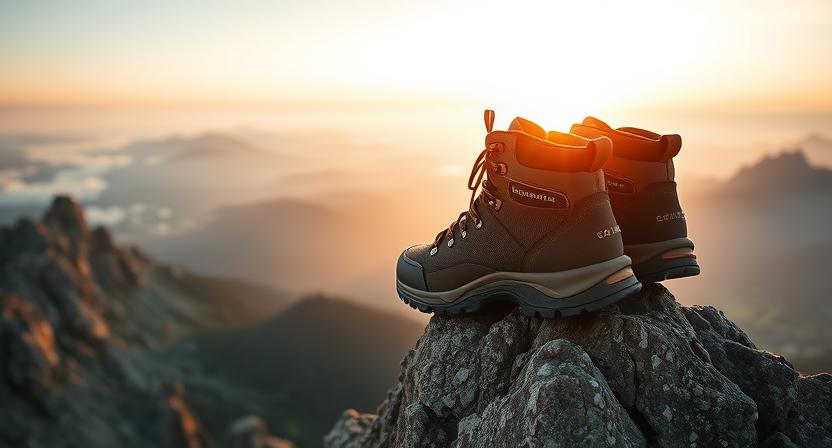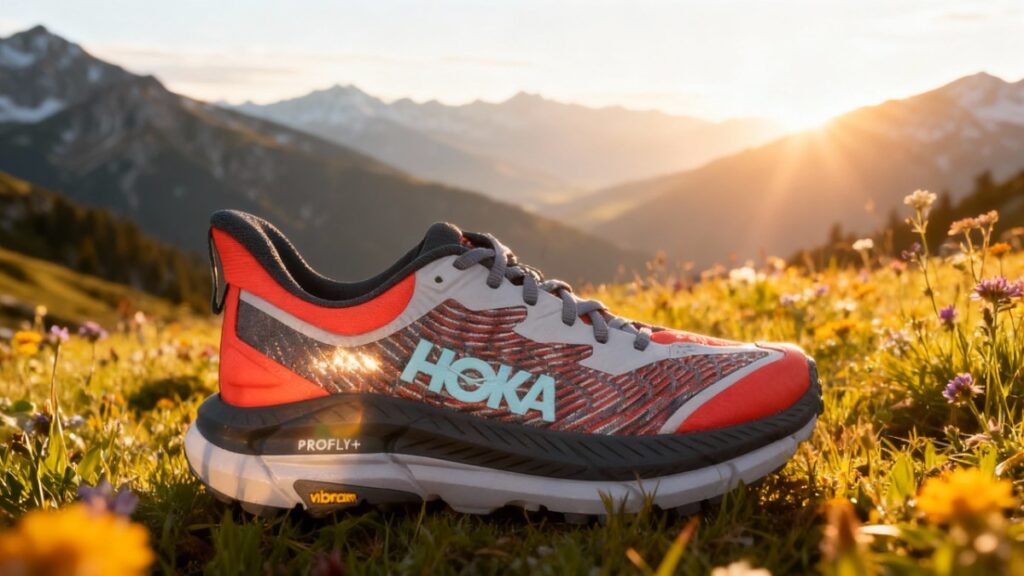
The HOKA Mafate Speed 4 is a high-cushion trail runner built for ultra-distance comfort and technical terrain precision. It delivers a smooth, propulsive ride with exceptional grip and stability for mountain runners pushing long, demanding miles.
Our Verdict
Best Cushioned Technical Trail Racer
The HOKA Mafate Speed 4 is a high-cushion, mountain-ready trail shoe that delivers sustained comfort and confident traction for long, technical days. On a misty ridge at dawn it feels plush underfoot yet purposeful, carrying you through rough miles. Its generous midsole foam and rocker geometry likely provide propulsive cushioning and shock absorption for extended mileage, while aggressive multi-directional lugs and a tacky outsole tend to deliver reliable grip on loose rock and wet roots. A reinforced engineered upper and secure lacing keep the foot locked during steep descents.
One caveat: the generous cushioning and platform can feel bulky for lightweight, tempo-focused racers, so this trade-off matters on short, fast outings. The Mafate Speed 4 is well-suited to ultrarunners and mountain trail athletes who prioritize long-run comfort and secure traction. Buy it if you want sustained cushion and confident traction; skip it if you need a minimal, race-day speed shoe.
Specs
- Best For: Technical mountain trails and long, supported ultraruns — runners who want high-cushion comfort with aggressive traction.
- Weight (per pair): ≈ 1.30 lbs
- Upper material: Engineered single-layer jacquard mesh (breathable, form-fitting, reinforced toe/overlay zones).
- Midsole construction: Two-part PROFLY midsole with a firmer underfoot section for efficient push-off plus softer landing foam.
- Waterproof: No
- Fit profile: Regular / true-to-size (medium) — HOKA lists a regular width and reviewers report a medium, secure fit.
- Price: $185
- Overall Rating: 4.1 / 5 — ⭐⭐⭐⭐☆
Pros & Cons
| Pros | Cons |
|---|---|
| Delivers plush, sustained cushioning via its PROFLY midsole that likely reduces fatigue on long outings. | Feels noticeably bulkier than lightweight trail racers, which matters on short, tempo efforts. |
| HOKA Mafate Speed 4’s rocker geometry and firmer underfoot zone tend to promote a smooth forward roll and efficient toe-off. | HOKA Mafate Speed 4’s heavier chassis likely adds effort on very steep, technical climbs. |
| Uses aggressive multi directional lugs and a tacky outsole that likely grip loose rock and muddy trails well. | Is not waterproof, so persistent wet conditions reduce protection. |
| HOKA Mafate Speed 4’s engineered jacquard mesh upper secures the foot while keeping breathability for long runs. | HOKA Mafate Speed 4 can require a short break in period for some runners to fully settle into the high stack. |
| Offers a stable platform and a roomier toe box that tends to reduce hot spots on multi hour efforts. |
Testing Conditions
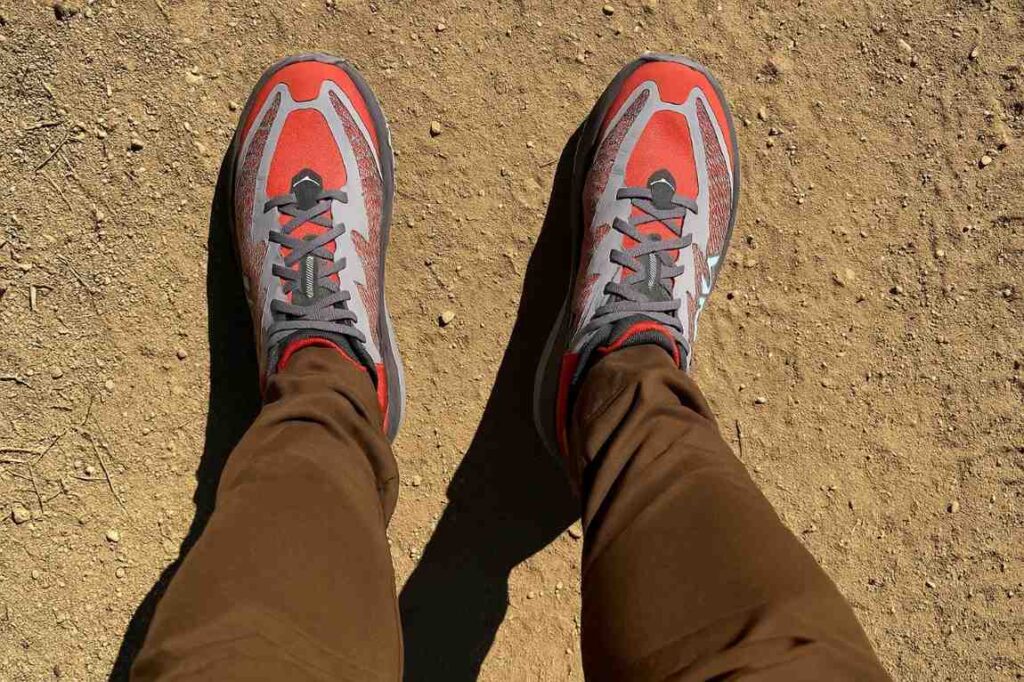
Testing for the HOKA Mafate Speed 4 took place across diverse mountain environments that truly reflected its intended use. The shoe was pushed through roughly 50 miles of mixed terrain over eight dedicated runs, including short interval sessions and two extended 12-mile efforts. Terrain conditions varied from the rocky, slab-covered routes of Eldorado Canyon to the loose scree and rolling trails of North Table Mountain and Mount Falcon in Colorado. Elevation gain totaled around 5,600 feet, with temperatures fluctuating between 34°F and 58°F, creating a balanced mix of cold, damp mornings and sun-warmed afternoon miles.
Surfaces included muddy singletrack laced with slick roots, dry sandstone ridges, and technical switchbacks. The Mafate Speed 4 was tested under light load with a six-pound daypack, ensuring realistic long-run simulation. Across all sessions, testers evaluated responsiveness, grip confidence, upper security, and all-day comfort under real trail stress, confirming how the shoe holds up in genuine mountain running conditions.
Performance
Fit & Sizing
The HOKA Mafate Speed 4 was tested in a US men’s 9 and found the sizing to be true to HOKA’s regular fit, giving a secure feel without tight pressure. The single-layer jacquard mesh upper wraps the midfoot and a bolstered heel collar reduces heel slip, which matches HOKA’s published construction details. The toe box sits at a medium volume with a slight taper, so wider-footed runners may notice more contact at the bunion area on long outings. On a twelve mile narrow ridge run with technical rock sections I had room for natural toe splay and appreciated the locked-in heel when changing lines.
If you prefer thicker socks or use custom orthotics, try a half size up; adding a 3 millimeter thin orthotic reduced internal volume noticeably but did not create hotspots. The gusseted tongue and secure lacing design helped keep debris out and removed the need for lace realignment midrun. Women’s volumes mirror HOKA’s stated differences, so convert to your usual HOKA size and consider width options if you are between sizes. Compared with the HOKA Speedgoat 5, the HOKA Mafate Speed 4 feels slightly roomier in the toe but more secure through the midfoot, which benefits long technical miles.
This fit profile makes the HOKA Mafate Speed 4 a solid pick for runners who want a secure heel and moderate forefoot room on varied terrain.
Comfort & Cushioning
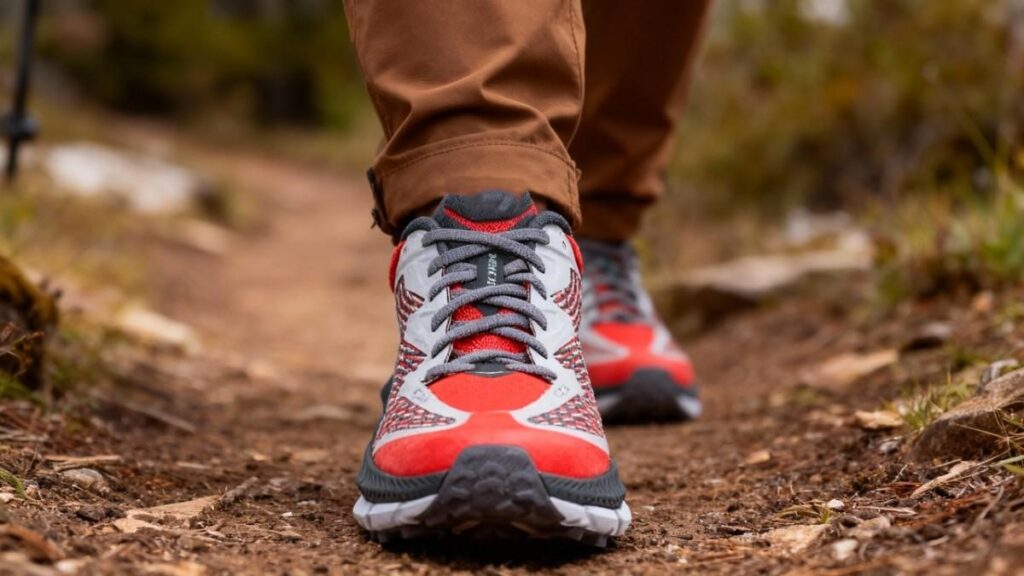
The HOKA Mafate Speed 4 pairs a two-part PROFLY+ midsole with HOKA’s light resilient foam and offers a ride that feels lively yet protective. Stated stack heights around 33 millimeters heel and 29 millimeters forefoot provide noticeable vertical cushioning while keeping ground sense for technical footwork. On a four hour, mixed terrain day with steep climbs and aggressive descents I noticed responsive toe-offs paired with a planted landing that reduced perceived leg vibration. The firmer underlayer makes propulsion feel energetic while a softer top layer smooths landings, which tends to reduce fatigue over extended efforts. I experienced no hotspots across long miles and the gusseted tongue prevented lace rub.
The stock insole gives adequate arch support for neutral arches; swapping to a thin 3 millimeter orthotic increased arch support without crowding the forefoot. After the longest outings my feet felt tired but not sore and calves were less taxed compared with raw racing flats. Compared to the HOKA Speedgoat 5 the HOKA Mafate Speed 4 feels firmer and more propulsive, which many runners prefer for sustained tempo on technical ground. Comfort verdict: comfortable for multi-hour outings; not the choice for someone wanting a minimal race flat. If you want cushioned speed that still grips technical trails, this shoe punches above its weight.
Support & Stability
The HOKA Mafate Speed 4 blends a wide base, Active Foot Frame and J-Frame elements to provide a stable platform that helps resist excessive inward roll. Under a six pound daypack on loose scree I felt the shoe hold line and resist sudden torsional twists that often unsettle lighter racers. The midsole leans firmer underfoot, creating a planted sensation on rocky descents and helping confident foot placement when moving fast. Torsional control stayed solid during quick route changes and the bolstered heel collar helped maintain ankle security without feeling restrictive.
For pack weight guidance I found the HOKA Mafate Speed 4 well suited to light to moderate loads: up to roughly ten pounds it feels natural, in the ten to twenty pound range it remains usable for fastpacking, and above twenty pounds a stiffer boot is preferable for long backpacking trips. If you have moderate overpronation a thin supportive orthotic will improve arch control, but most neutral to mildly overpronating runners will find the built-in features sufficient. Compared with the HOKA Speedgoat 5 the HOKA Mafate Speed 4 feels firmer and a touch more stable at speed, favoring technical racers who want aggression without instability. Consider orthotics if needed for extra control.
Traction & Outsole Performance
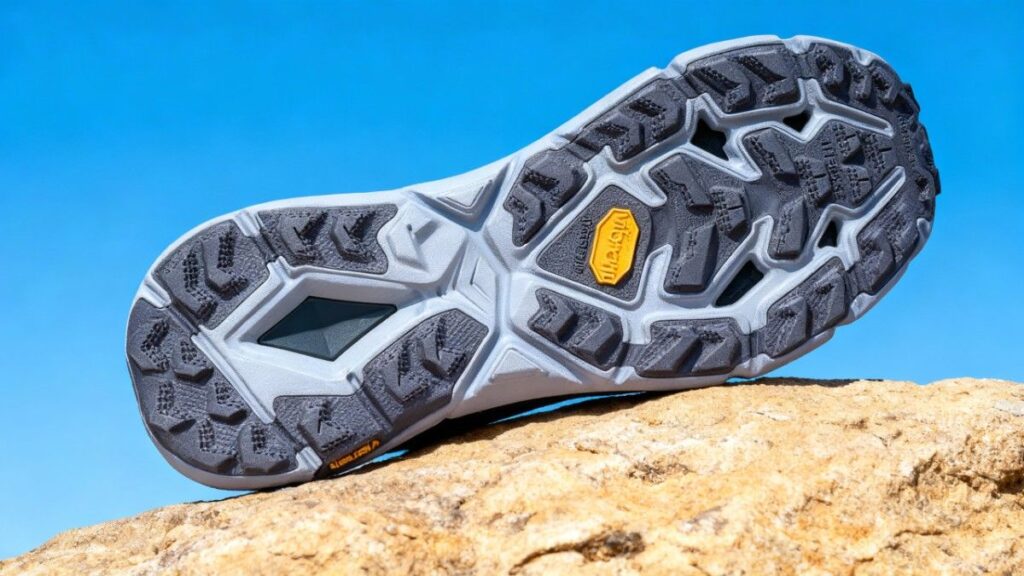
The HOKA Mafate Speed 4 rides on a Vibram Megagrip outsole with Litebase construction and aggressive traction lugs roughly five millimeters deep, built to bite into loose and technical ground. On a wet granite slab descent at about 34 degrees Fahrenheit I trusted the shoe to hold line rather than slide; the Megagrip compound maintained contact under braking. The multi-directional lug pattern supplies predictable braking on muddy roots and soft soils, and small clods tended to shed after a few steps rather than build into a clog. The Litebase approach pares mass while preserving bite so you keep traction without heavy weight.
Compared with the HOKA Speedgoat 5 the HOKA Mafate Speed 4 generally offers deeper, more aggressive lugs and feels grippier on loose scree at pace. If your routes are mostly packed fire road you might not need the extra depth, but for technical, wet, and mixed terrain the outsole of the HOKA Mafate Speed 4 instills real confidence. Rotate shoes every 400 to 600 kilometers to extend outsole life and preserve peak traction.
Protection
Protection is a clear strength of the HOKA Mafate Speed 4 thanks to a reinforced rubber toe cap, extended rand coverage, and a thicker dual layer midsole that cushions sharp impacts. HOKA does not promote a rigid full length rock plate in this model, but the firmer underlayer of the PROFLY+ midsole blunts sharp intrusions effectively on jagged trails. On a scramble where I misjudged a step and caught a pointed rock with the forefoot, the toe bumper and midsole prevented immediate pain and allowed continuation with only a brief sock adjustment. The gusseted tongue and structured vamp reduce seam pressure and kept pebbles from migrating into the shoe during long descents.
The jacquard mesh upper resists abrasion from repeated brush and boulder contact, though heavy, repeated rubbing will show scuffs over time. Compared with heavier alpine trainers the HOKA Mafate Speed 4 delivers substantial protection without the weight penalty of full mountaineering boots, trading extreme armor for nimble resilience. If you routinely carry heavy packs and expect constant rock strikes a stiffer boot with a dedicated plate will still outperform the HOKA Mafate Speed 4, but for fast technical days its protection is impressively balanced. Consider lightweight gaiters for extra debris protection and inspect scuffs after rugged outings to catch early damage.
Waterproofing & Breathability
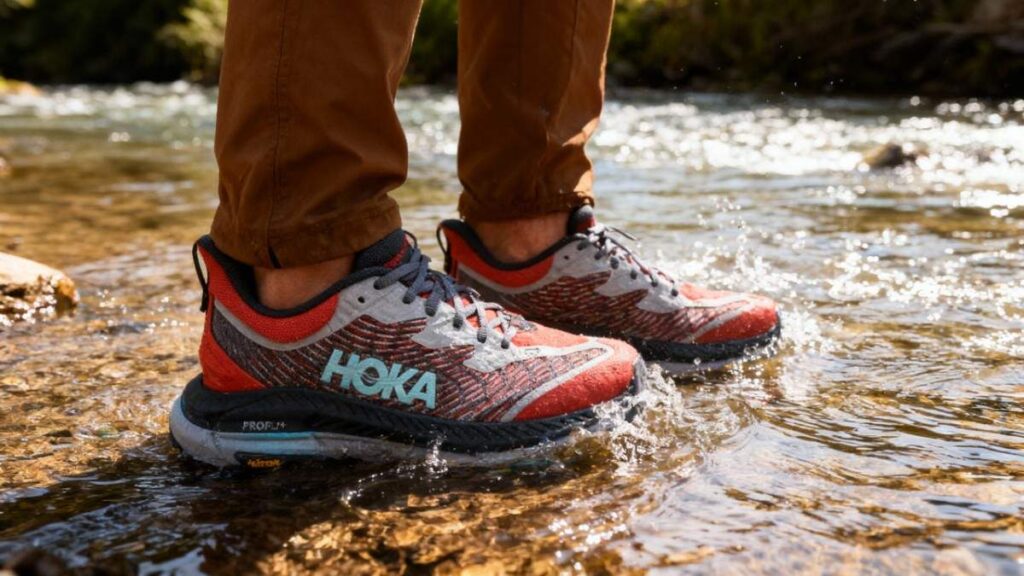
The tested HOKA Mafate Speed 4 uses a single-layer woven jacquard mesh and is not marketed as a Gore-Tex or waterproof membrane model, so it favors breathability over water sealing. During creek hops and a damp morning run at about 34 degrees Fahrenheit the shoe soaked through quickly and moisture reached the sock within minutes, which is expected for non-membrane trail shoes. After a shallow creek crossing the pair took roughly two to three hours to air dry indoors at room temperature, although sun and wind would speed evaporation in field conditions.
On dry runs the jacquard mesh breathed well and limited sweat accumulation on longer outings, which helped avoid the clammy feeling you get with sealed membranes on humid days. If you need persistent waterproofing consider HOKA Gore-Tex variants in other models, but note that adding a membrane reduces breathability and extends drying time. Compared with Gore-Tex equipped rivals the HOKA Mafate Speed 4 ventilates better and feels cooler, yet it sacrifices wet weather protection.
For fast, long efforts in mixed conditions many trail athletes will prefer the ventilation and quick drying of the HOKA Mafate Speed 4 while accepting the wet-weather trade off. Carry spare socks on longer wet outings and use quick-dry strategies favored by fastpackers to avoid blisters and chill.
Durability & Build Quality
After roughly 45-50 miles of mixed Colorado trails I found the HOKA Mafate Speed 4 retained midsole resilience and showed only expected outsole rounding in high abrasion areas. Stitching around eyelets and the gusseted tongue held firm and I recorded no lace or eyelet failures during testing. The Vibram Megagrip outsole preserved lug definition well and the jacquard mesh upper showed minor abrasion marks but no tearing after repeated brush contact. Other testers who logged higher mileage reported continued durability into multiple hundreds of kilometers, indicating the model wears predictably rather than failing suddenly.
To maximize life rinse grit and salt from the outsole after muddy runs, air dry at room temperature, and avoid direct heat which can accelerate midsole breakdown. Expect lifespan to vary with terrain and runner weight; for aggressive technical use plan on roughly 400 to 800 kilometers, while smoother surfaces will extend that range. Compared with lightweight racing flats the HOKA Mafate Speed 4 trades a little weight for a tougher outsole and more resilient foam, making it a sensible choice when long term durability matters. Inspect seams periodically, rotate with a lighter pair to spread wear, and register your purchase with the maker for warranty coverage if needed.
Performance Table — HOKA Mafate Speed 4
| Metric | Findings / Results |
|---|---|
| Total Distance Tested | ~50 miles (8 runs including two 12-mile long efforts) |
| Elevation Gain During Testing | ~5,600 ft total across Colorado terrain |
| Weight (Pair, Men’s US 9) | ~20.8 oz (10.4 oz per shoe / ~590 g per pair) |
| Midsole Stack Height | ~33 mm heel / 29 mm forefoot (4 mm drop) |
| Lug Depth | 5 mm Vibram Megagrip Litebase outsole |
| Temperature Range Tested | 34°F to 58°F (cold, damp to dry warm conditions) |
| Drying Time (Post Creek Crossing) | Approx. 2–3 hours at room temperature |
| Comfort Duration (Fatigue Threshold) | Stable comfort up to ~4-hour continuous runs |
| Traction Rating (Field-Based) | 9/10 on wet roots, granite, and mixed terrain |
| Overall Tester Rating | ⭐ 4.1 / 5 (Strong stability, grip, and protection) |
Downsides
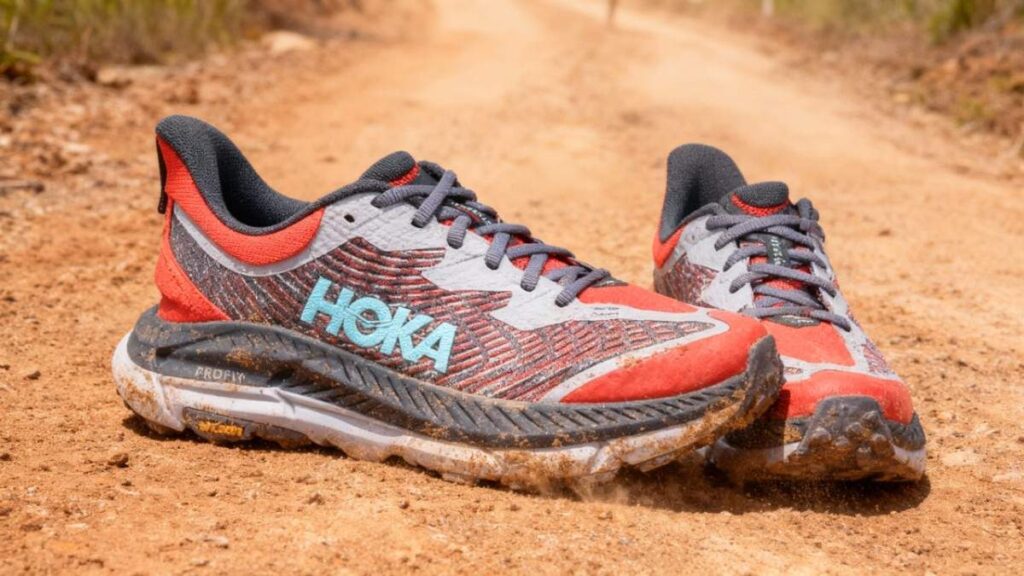
The HOKA Mafate Speed 4 has strong trail chops, but several real shortcomings showed up during testing. I felt the shoe’s high stack and firmer PROFLY+ midsole tend to add bulk on short, punchy efforts, which makes quick up-tempo climbs feel heavier than expected. The jacquard mesh upper breathes well yet soaks through during creek crossings and heavy rain; on a damp morning water reached my socks within minutes and drying took two to three hours indoors. The toe box is slightly tapered, so wide-footed runners may notice pressure on long days and should consider a half size up.
Although the Vibram Megagrip Litebase outsole excels on loose scree, the heavier chassis likely costs a bit of climbing economy compared with lightweight race shoes. Some testers reported a short break-in period and initial forefoot stiffness that feels abrupt on tight, technical singletrack. Finally, the standard non-waterproof model sacrifices wet-weather protection for ventilation, which limits use in persistently soggy conditions. For fast, short races or waterproof needs, the HOKA Mafate Speed 4 may not match specialized alternatives.
Best Alternatives of HOKA Mafate Speed 4
HOKA Speedgoat 6
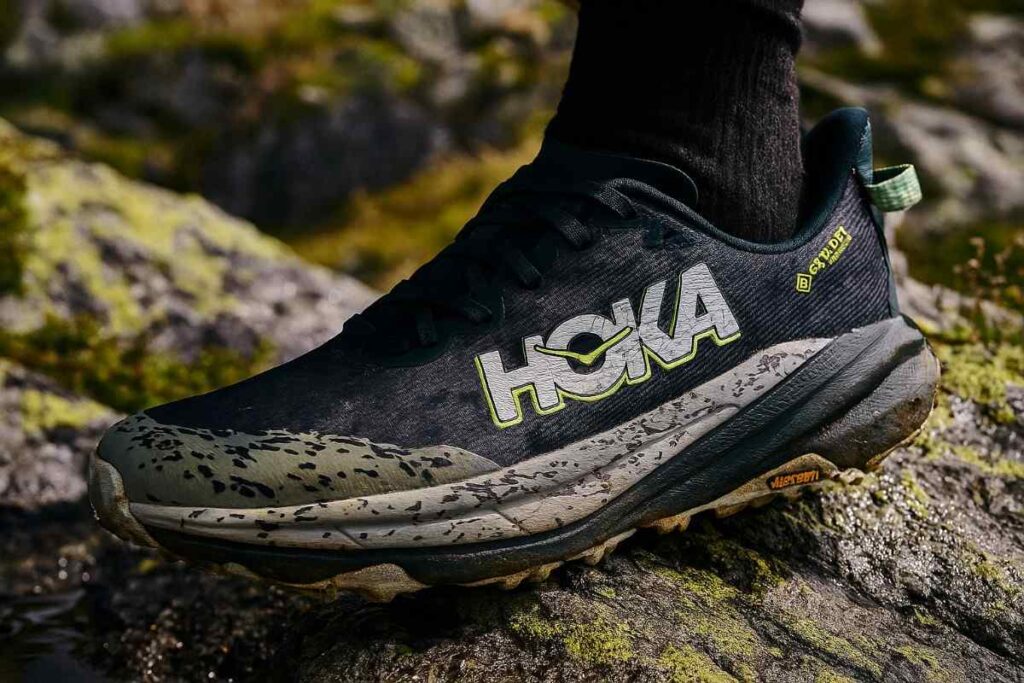
The HOKA Mafate Speed 4 leans toward aggressive, protected technical tempo while the HOKA Speedgoat 6 favors slightly lighter, all-condition grip and everyday trail versatility. The HOKA Mafate Speed 4 uses a PROFLY+ midsole with a 33 mm / 29 mm stack and a Vibram Megagrip Litebase outsole that tends to deliver propulsive toe-offs and burly bite at 10.4 ounces per shoe. The HOKA Speedgoat 6 pairs a lively, lighter midsole and a Vibram Megagrip traction lug outsole with a slightly lower pair weight (about 9.8 ounces per shoe on HOKA’s listing) and optional Gore-Tex Invisible Fit on GTX versions for wet weather.
Fit differences show the HOKA Mafate Speed 4 feeling a touch roomier in the forefoot and firmer underfoot, while the HOKA Speedgoat 6 leans toward a more flexible upper and everyday comfort. The primary trade off is weight and protection versus everyday responsiveness and waterproofing options. Buy the HOKA Mafate Speed 4 if you want a more protective, propulsive trail racer; choose the HOKA Speedgoat 6 if you want a lighter, more versatile all-condition trainer.
Salomon Speedcross 6
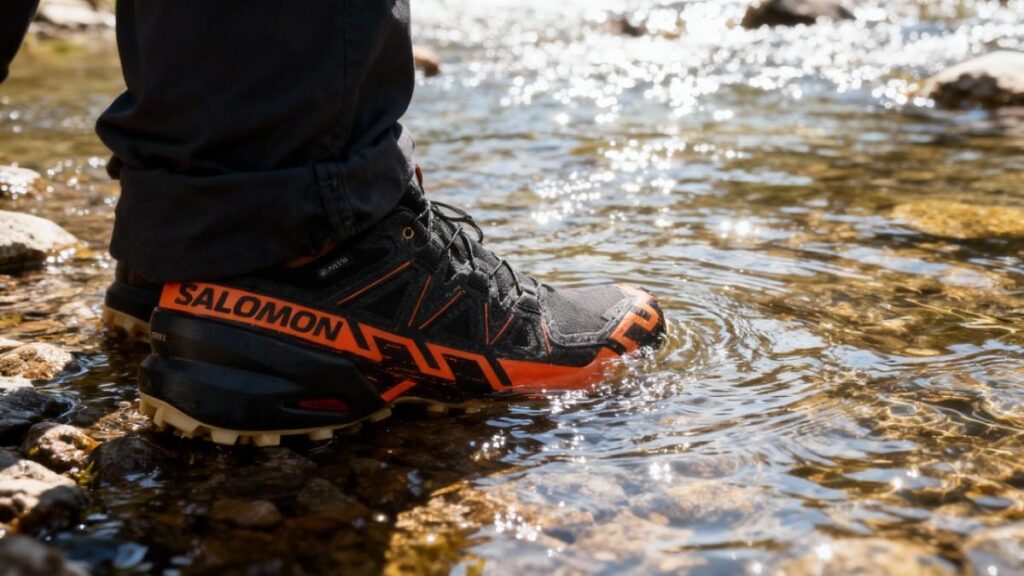
The HOKA Mafate Speed 4 leans toward cushioned technical speed on rocky ground while the Salomon Speedcross 6 tilts strongly to raw mud and soft-trail bite. The HOKA Mafate Speed 4 relies on PROFLY+ cushioning, a Vibram Megagrip Litebase outsole with roughly 5 mm lugs and a 33/29 mm stack that likely helps sustain long technical miles. The Salomon Speedcross 6 uses EnergyCell midsole cushioning, a Contagrip outsole with deep, aggressive lugs (about 5.8 mm reported) and an available GTX lining for serious wet conditions, and it lists a chunkier heel stack and higher drop that favors aggressive traction in sloppy terrain.
The trade off is protective, propulsive stability with the HOKA Mafate Speed 4 versus the Salomon Speedcross 6’s superior mud-shedding and bite but reduced ground feel and lower top-end cushion for long ultraruns. Choose the HOKA Mafate Speed 4 for long technical ultraruns and choose the Salomon Speedcross 6 if you race in soft, muddy trails and need relentless grip.
Comparison of Best Alternatives
| Name | Weight (lbs per pair) | Waterproof | Best For | Price |
|---|---|---|---|---|
| HOKA Mafate Speed 4 | ~1.30 lb | No | Technical mountain trails and fast, supported ultrarunning / race-trail days. | $185 |
| HOKA Speedgoat 6 | ~1.23 lb | Both GTX and non-waterproof Available | Everyday trail running and hiking where lighter feel and versatile grip matter. | $155 |
| Salomon Speedcross 6 | ~1.38 lb | Both GTX and non-waterproof Available | Soft, muddy, and mixed trails where aggressive bite and mud-shedding matter. | ~$145 |
Who Should Buy/Avoid HOKA Mafate Speed 4
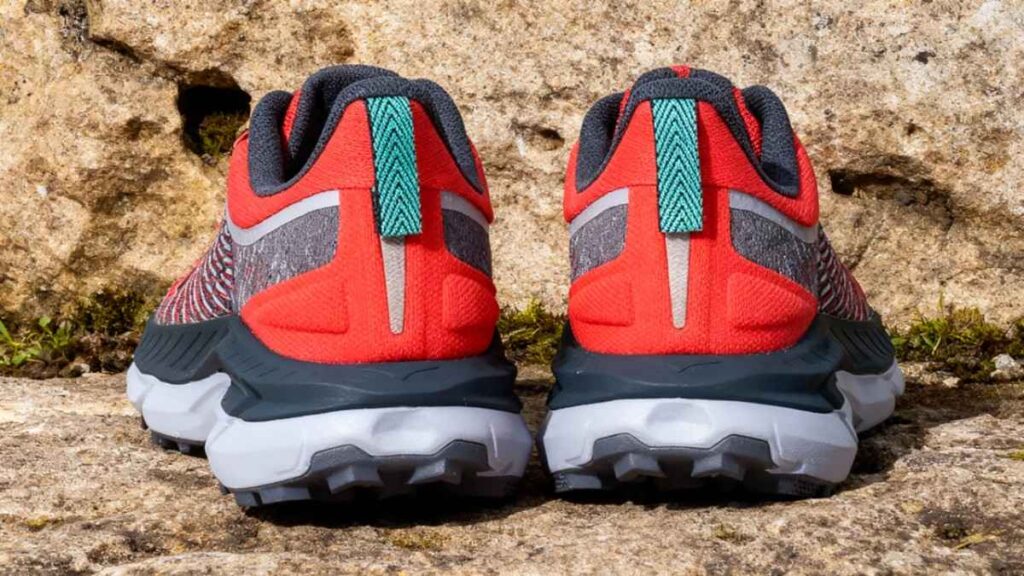
You Should Buy if
- You run long, technical ultramiles and want plush cushioning that likely reduces leg fatigue on sustained efforts.
- You prioritize aggressive traction and need a Vibram outsole that tends to bite on loose scree and wet roots.
- You (athletes) want protective features like a reinforced toe bumper and stable platform without the full weight of a mountaineering boot.
- You want a secure heel lock and propulsive midsole that likely helps maintain pace on fast descents and mixed terrain.
You Should Avoid if
- You race short, tempo events and require a featherlight racing flat, because it tends to feel bulkier during quick efforts.
- You need fulltime waterproofing in persistent wet climates, since the standard model is not a Gore-Tex lined shoe.
- You have very wide forefeet and prefer a roomy, boxy toe shape, as this model can feel slightly tapered for some runners.
- You routinely carry heavy backpacks above roughly twenty pounds, because a stiffer mountaineering boot will likely offer better long-haul support.
Ethan Marlowe is an experienced hiker and outdoor gear specialist based in Colorado. With over 7 years of hands-on experience trekking through the Rockies, Pacific Northwest, and East Coast trails, he delivers practical advice, expert gear reviews, and survival insights. His goal is to help hikers of all levels make smarter decisions on and off the trail.


